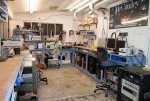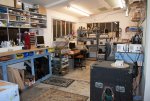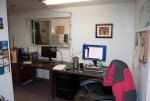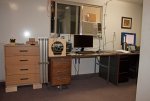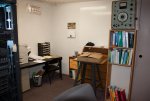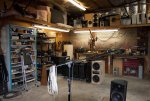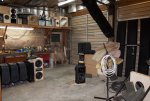A few years ago I started the project of turning the long abandoned 1970s McCauley Sound factory back into a functional loudspeaker workshop. I think I posted some pictures of the place at the time. The roof leaked everywhere. It was stacked floor to ceiling with enclosure prototypes, lawn furniture, broken lawn mowers, old aluminum casting equipment, ... what else, terrible Russian OEM loudspeakers.. Well it was a lot of crap.
I can finally say today that it is really functional. All the junk is gone. The roof has been replaced. All the cables have been sorted out. All of those little plastic drawers filled with miscellaneous screws have been sorted.
I thought I would post some final follow up pictures. I posted some, light at the end of the tunnel pictures about six months ago I think. But now all the shelves are up, all the turn of the century computers are gone. Yeah! It's still dirty, but it works.
Oh yea, and we've rented the old forge where we used to sandcast all of our own aluminum baskets to a local cabinet company so we have a full woodshop and paint booth of the premises again too.
Anyway, it is neat to have a space to work on projects outside of the normal production workflow.
I can finally say today that it is really functional. All the junk is gone. The roof has been replaced. All the cables have been sorted out. All of those little plastic drawers filled with miscellaneous screws have been sorted.
I thought I would post some final follow up pictures. I posted some, light at the end of the tunnel pictures about six months ago I think. But now all the shelves are up, all the turn of the century computers are gone. Yeah! It's still dirty, but it works.
Oh yea, and we've rented the old forge where we used to sandcast all of our own aluminum baskets to a local cabinet company so we have a full woodshop and paint booth of the premises again too.
Anyway, it is neat to have a space to work on projects outside of the normal production workflow.
Attachments
Last edited:

